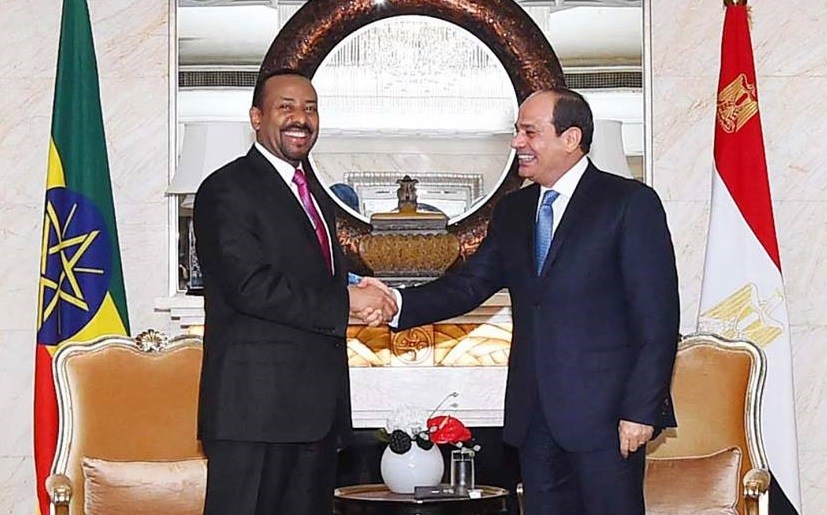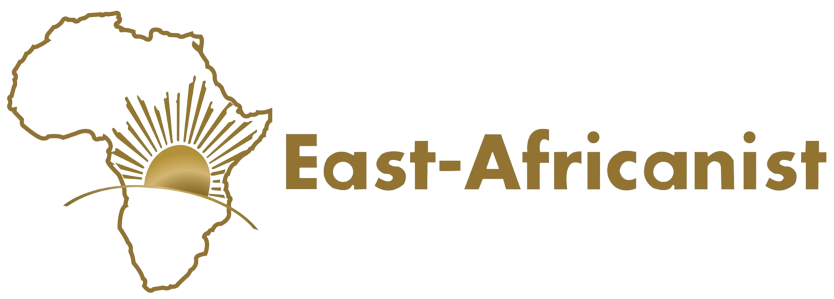Semu Moges (Ph.D., P.E.) argues Ethiopia, The Sudan and Egypt should immediately resuscitate the stalled tripartite diplomatic discussions on matters related to GERD. According to him, it is in the three countries’ best interest to prioritize an agreement on issues pertaining to the filling of the Great Ethiopian Renaissance Dam.
The Tripartite Discussions in Context
Author: Semu Moges (Ph.D., P.E.)
The tripartite negotiation between Egypt, Ethiopia and Sudan on the filling and operation of GERD dam is a result of gradual trust and confidence building measures cultivated from the Nile Basin Initiative (NBI) process and the good faith approach that has been a hallmark of Ethiopia’s approach to date. The NBI is a breakthrough of comprehensive transitional mechanism of Nile riparian countries established in February 1999 with the shared vision of “achieving sustainable socio-economic development through the equitable utilization of, and benefit from, the common Nile Basin water resources.”
Such shared visions and principles have transformed relations amongst the riparian countries. Importantly, the initiative has also led to a growth in understanding of the Nile river from 20th century my ‘historical rights‘ and my ‘sovereign rights‘ concept to the concept of ‘shared rights.’ Over the last 20 years, NBI has also managed to maintain a platform for cooperation, generate knowledge, and contribute to capacity building across its signee states.
With regards to GERD, abiding by the evolving process thanks to NBI and its leaders’ good faith approach, Ethiopia has thus far:
- provided all necessary design reports of GERD to Egypt and Sudan,
- agreed for the establishment of international panel of experts (IPOE), which presented their findings and recommendations
- agreed for the establishment of tripartite technical committee as recommended by IPOE to address the downstream concerns. And finally,
- Ethiopia has been implementing the recommendation of the international panel of experts in good faith.
Thanks to Ethiopia’s open and direct approach, the process has worked well and the three countries were fully participating until the process took a different turn, just recently.
The sudden involvement of the USA in the current GERD filling and operation of negotiation first as an observer, then forcing itself as mediator-in-chief and eventually prosecutor-in-chief – pressuring Ethiopia to sign an agreement that is contrary to its national interest and the shared principles of the Nile basin countries, has led to a rise in the debate on this matter. According to sources close to negotiation, the technical details of Annex A provided by the USA does not allow Ethiopia to fill the dam in time and operate the reservoir to generate adequate power in the long run. Furthermore, the recent statement from the secretary of the treasury warning Ethiopia not to fill the dam before agreement is reached would likely embolden Egypt and Ethiopia to their tightly held positions and drag the already built good faith negotiation back to previous years of rhetoric, suspicion and even potentially to hydro-political conflict. There is a fear the tripartite technical negotiation may collapse.
In the long-term interest of the peoples of the three countries, the governments of Egypt, Ethiopia and Sudan need to return back to the tripartite negotiation mechanism they established and continue with the momentum. As logical sequence of events, the three countries need to agree primarily on immediate concern of filling the dam than enter into the long-term operation agreement, which is permanent in nature and has unintended and intended implication to future water utilization for Ethiopia. This article proposes the good faith approach to negotiation is to delink the filling and long-term operation of the dam and continue a phased negotiation approach.

2. Delinking the GERD filling and long-term operation agreement
- Inconsistency between January 15 and 31st, 2020 statements – One important ignored issue is the shared commitment of mitigating drought, prolonged drought and prolonged dry period years, which was indicated in the pre-agreement statement of January 15, 2020 but not mentioned in the January 31st, 2020 released joint statement. The lack of reflection of the shared responsibility of drought events by the three countries in the January 31st joint statement undermines the joint statement of January 15, 2020, which states “The Ministers agree that there is a shared responsibility of the three countries in managing drought and prolonged drought.” The January 31st statement silently imposes burden of the prolonged drought on Ethiopia. That is why the long-term operation requires sufficient time for reflection and negotiation – mainly to reflect on factors influencing the long-term operation and bring the shared responsibilities of countries on board. The roles of Egypt and Sudan needs to come out as partners in the mitigation of potential drought.
- Future climate change impacts and uncertainties – Scientific studies indicate the climate change impact on the Blue Nile River poses uncertain threat. Study indicate the long-term mean flow of Nile which was about 80 BCM in the past (1900–2000) is projected to likely shift to 92 BCM (2000–2100), which may be a good news. However, there is overwhelming evidence that Nile flows are very sensitive to small changes. Studies indicate that despite tendency of increasing rainfall, devastating hot and dry spells are projected to become more frequent in the Upper Nile basin. This increases risks and uncertainties of operation. The recent undue pressurizing to conclude long term operation is against the scientific evidence and needs to be considered in the negotiation.
- Consideration of water management from large irrigation schemes – Long term operation requires Egypt and Sudan to incorporate commitments for water saving and management from their large irrigation systems. More than 85% of the irrigation in Sudan and Egypt is gravity irrigation (author calculated). Excess water application and evaporation are causes of water lose in both Sudan and Egypt. Long term operation agreement needs to take into consideration accessing the lost water for the three countries using smart irrigation agriculture (automated water application technologies), virtual water trade (example: produce high water consuming crops such as sugar cane and rice in upland countries and sale the product to Egypt and Sudan) and many other emerging technologies. Studies in Egypt has shown that water saving can gain water that can be retained during GERD filling. This aspect needs to be tied to the long-term joint reservoir operations and shared management of prolonged droughts. Technical analysis and negotiation requires more time to reflect and elaborate on such long-term aspects of operations.
- Consideration of joint operation of the Eastern Nile System – Optimal and sustainable operation of the eastern Nile reservoirs including GERD and Aswan dam, requires a coordinated reservoir operation, and shared drought management policy. This requires parties to agree on modalities of joint operation of the Nile system. This takes time to scientifically understand benefits and drawbacks of joint operation, agree on institutional and monitoring mechanisms.
- Recognizing the huge additional waters locked in Egypt and Sudan –The diplomatic pressure and apparent water anxiety by Egypt is unfounded and out of context. Egypt shares the great Nubian Sandstone Aquifer System (NSAS) with Chad, Libya and Sudan. The total stored freshwater in the Egyptian’s part of the aquifer amounts to more than 150,000 BCM. One study shows, with only allowable drawdown of 100-meter depth, Egypt can easily access about 5350 BCM of fresh water from the aquifers. This is a great source of fresh water to supplement the additional water needs of Egypt for hundreds of years. If Egypt opts to develop this ground water and supplement its water supply by 20 BCM annually, the water can serve for over 250 years.
Furthermore, Egypt has a huge potential for seawater desalinization which greatly enhances future water availability. Ethiopia is a landlocked country with no access to sea. As we advance into the 21st century, the cost of seawater desalinization is dramatically decreasing and many countries including Israel and Spain are benefiting from the technology. Depending on the future technological ability of Egypt, it will have an enormous opportunity to access additional water resources from its coastline. In the interest of a good faith negotiation, Egypt rethink to take into account future additional resources at their backyard when they vigorously deal on long term operation of external waters. That contributes to building fraternity and hydro-solidarity in the region.

3. Conclusion: The Way forward for the three countries
As mounting technical evidences indicate, hasty conclusion of the long-term GERD operation may result in ill-fated agreement and become another conflict flash point. The long-term statements unfairly put burden on Ethiopia. It doesn’t reflect the shared responsibilities of the three countries. The future interest of the three countries is intertwined and a genuine, two-phased path to GERD agreement is required.
1) The first path is the three countries, in good faith and sense of cooperation, conclude and sign an agreement on the filling stage of GERDnow and declare this as achievement. The 1st stage of filling up to 595-meter is already agreed. The second stage of filling can be agreed cooperatively on annual basis. Seasonal flow forecasting modeling can be implemented to anticipate the incoming flows to GERD.
2) As far as long-term operation is concerned, allow more time for analysis, deliberation and final conclusion of the agreement on the filling stage. Most importantly, the agreement needs to be adaptive such that operation rules can be decided dynamically by the three countries on annual basis. However, a general framework of flow ranges in different flow regimes (wet, normal and dry) can be set subject to revision every few years or so (e.g. 5 or 10 years).
Semu Moges (PhD, P.E.)
Consultant and Adj. Professor at the University of Connecticut




